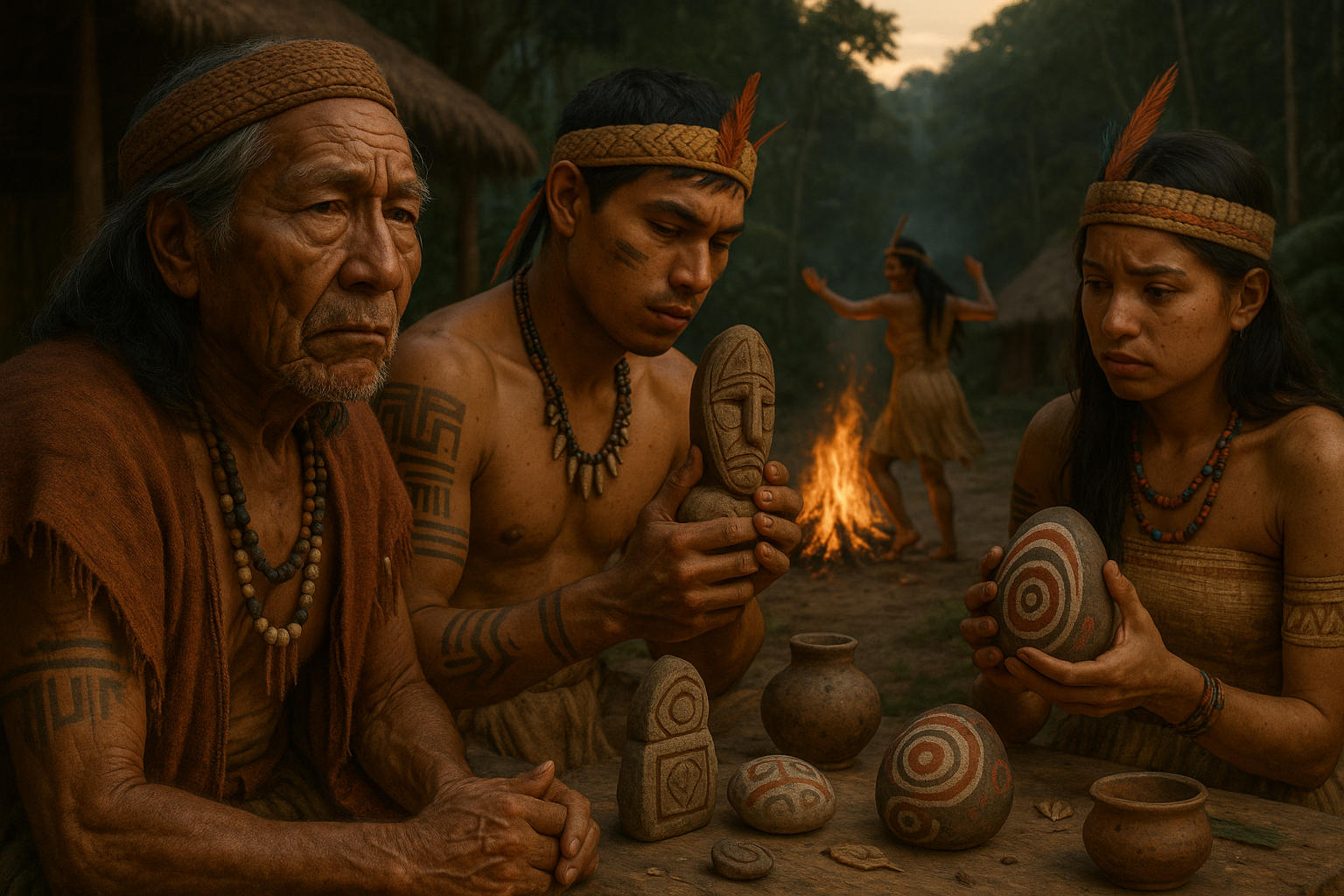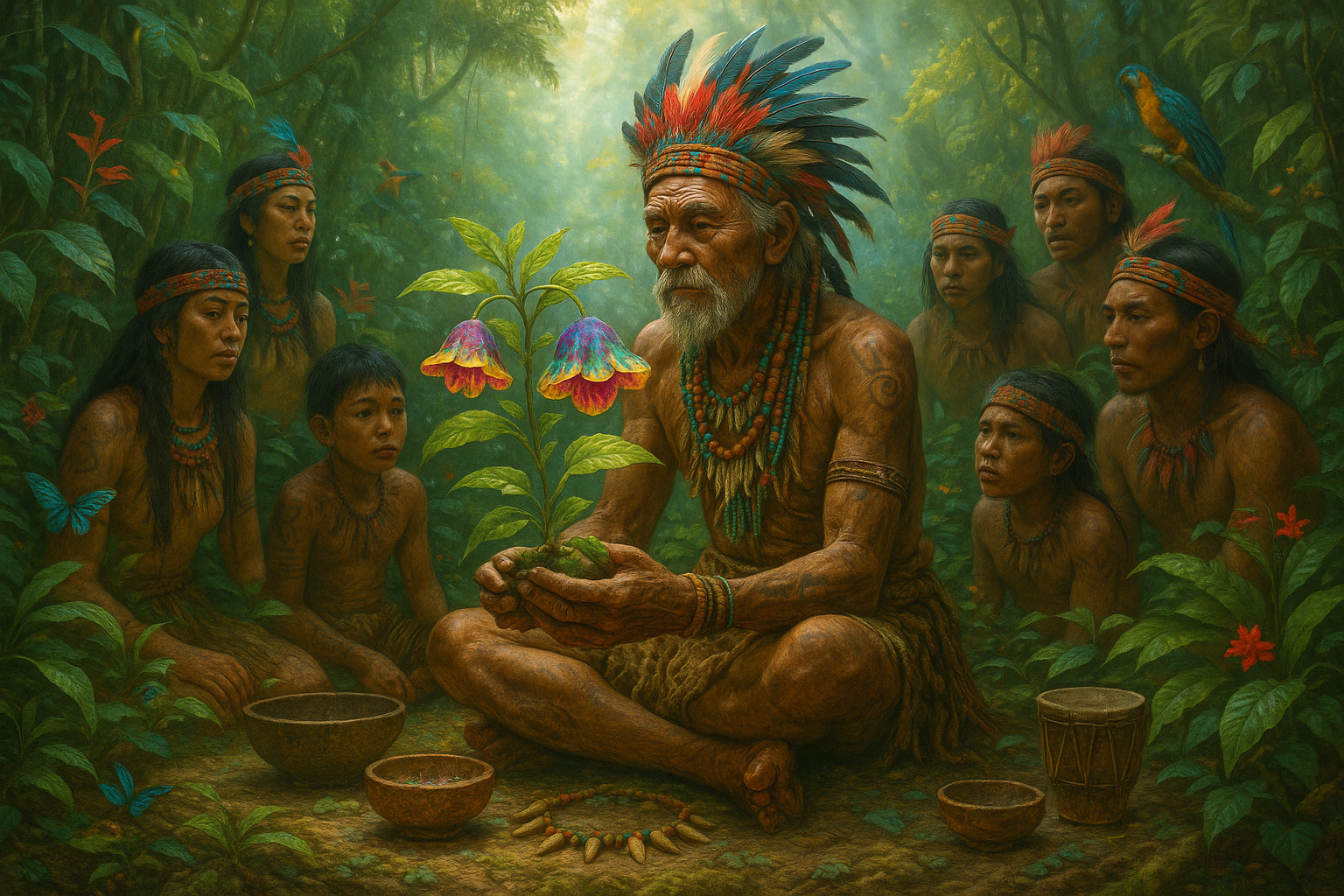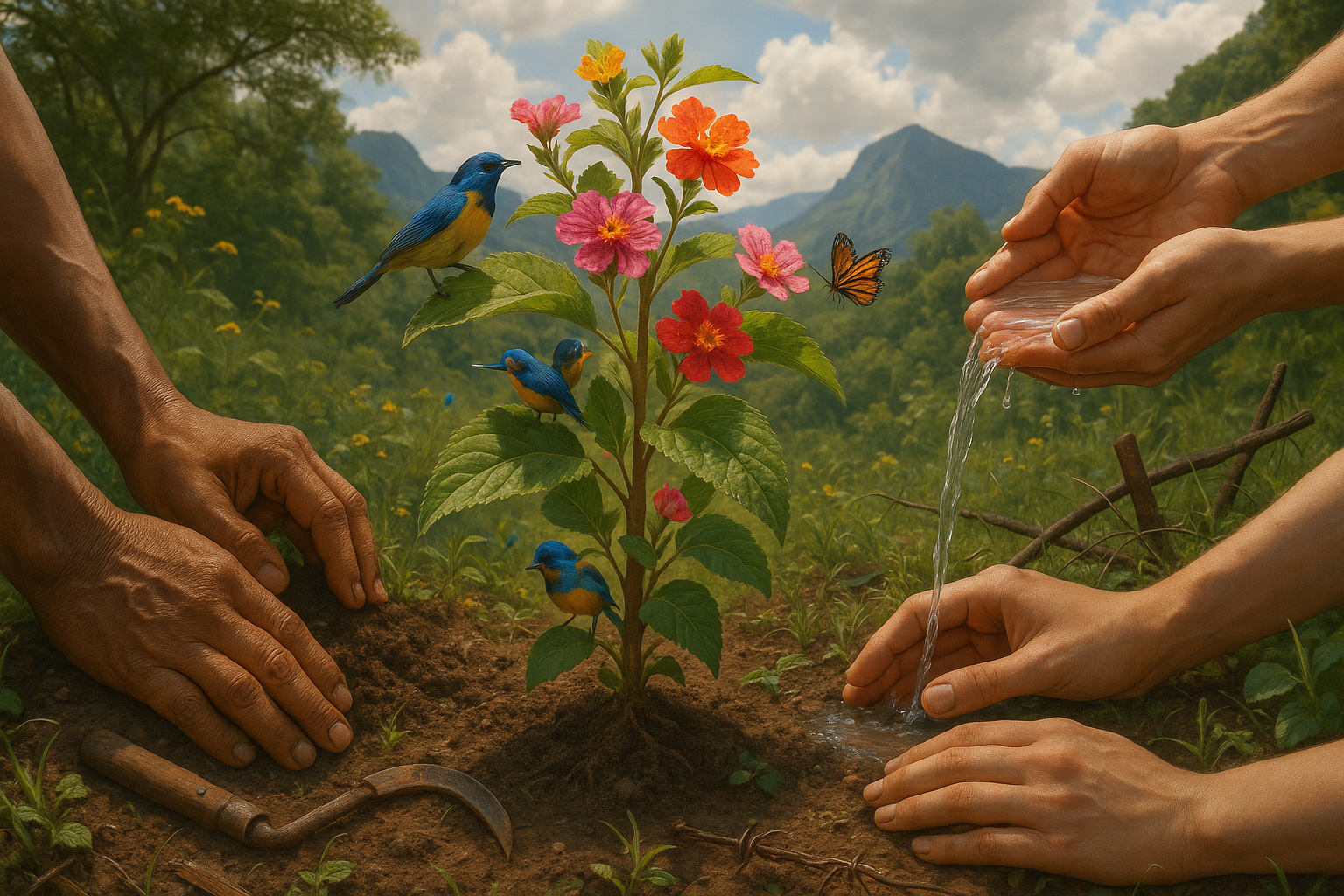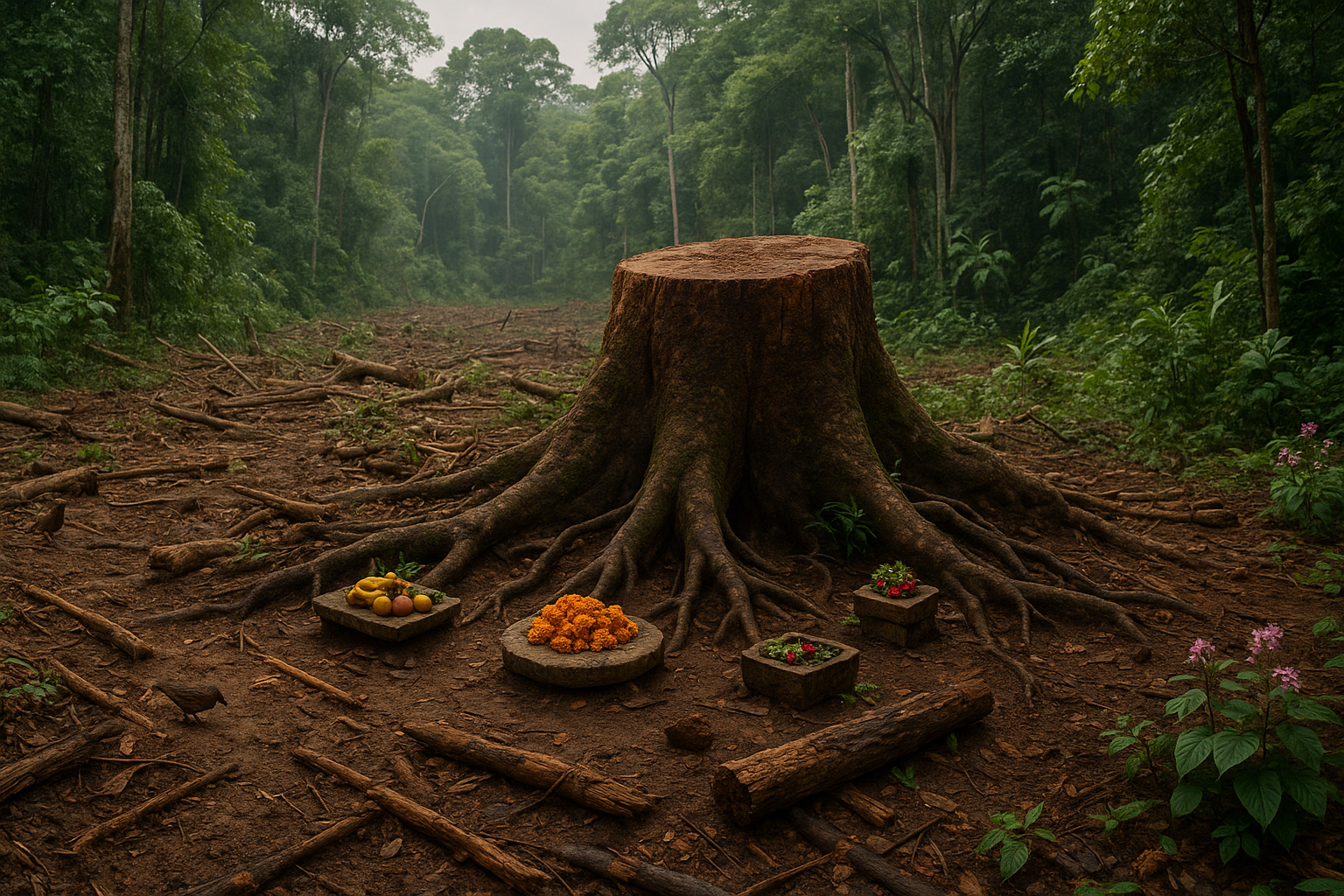Imagine a world where the very essence of your cultural identity is threatened by external forces. A world where age-old traditions, nurtured over generations, face extinction due to prohibitions imposed by colonial powers. This isn’t a tale from a distant past, but a reality that many Indigenous communities have faced. The suppression of native ritual plants by colonial authorities didn’t just limit the physical use of these resources; it profoundly altered the cultural landscape and heritage of countless Indigenous societies. 🌿
The imposition of colonial constraints on native ritual plants is a story of resilience, adaptation, and transformation. These plants, often revered as sacred, have played pivotal roles in the spiritual and cultural practices of Indigenous peoples for centuries. From spiritual ceremonies to healing rituals, they are deeply woven into the fabric of Indigenous life. Yet, with the arrival of colonial rulers, these plants became symbols of resistance and survival.
In this article, we will embark on a journey to uncover how prohibitions on native ritual plants reshaped cultural traditions. We’ll delve into the historical context of these prohibitions, exploring the motivations behind them and the impact they had on Indigenous communities. We’ll also examine how these communities responded, adapting their practices and finding innovative ways to preserve their cultural heritage in the face of adversity.
One of the key aspects we’ll explore is the spiritual significance of these ritual plants. For many Indigenous cultures, plants like peyote, ayahuasca, and tobacco are not mere flora; they are sacred entities, mediators between the physical and spiritual worlds. The colonial imposition of bans on these plants was an affront not only to cultural practices but to spiritual beliefs. By understanding the spiritual context, we gain insight into the depth of the cultural disruption caused by such prohibitions.
Furthermore, the article will shed light on the legal and political mechanisms used by colonial powers to enforce these prohibitions. We’ll discuss the broader colonial agenda and how these restrictions fit into a larger strategy of control and assimilation. The story of these plants is not just about cultural suppression; it is also about the assertion of power and the marginalization of Indigenous voices.
Despite these challenges, Indigenous communities demonstrated remarkable resilience. We’ll explore how they preserved their traditions through oral history, clandestine ceremonies, and the creative adaptation of practices. This resilience is a testament to the enduring strength of cultural identity and the unyielding spirit of Indigenous peoples. 🌟
Moreover, the article will consider the contemporary relevance of these historical prohibitions. In today’s world, where there is a growing interest in traditional and plant-based healing practices, understanding this history is crucial. It not only informs current debates on cultural appropriation and the rights of Indigenous peoples but also highlights the need for respectful engagement with Indigenous knowledge systems.
As we navigate through these topics, the article will be enriched with stories from different Indigenous communities around the world. Each story is unique, yet they all echo a common theme of struggle, adaptation, and resilience. These narratives serve as powerful reminders of the importance of safeguarding cultural traditions and respecting the sacredness of nature.
By the end of this article, you will have gained a deeper appreciation for the complexities of cultural preservation amidst colonial constraints. You’ll understand how prohibitions on native ritual plants not only challenged Indigenous traditions but also sparked a dynamic process of cultural evolution. Join us as we unravel this intricate tapestry of history, spirituality, and cultural resilience. Together, let’s honor the legacy of those who fought to keep their traditions alive against all odds. 🌍✨

Conclusion
Throughout this article, we have journeyed through the intricate tapestry of colonial history, focusing on the prohibitions imposed on native ritual plants and their profound impact on cultural traditions. This exploration has not only highlighted the resilience and adaptability of indigenous cultures but also underscored the complexities and lasting effects of colonial rule. By examining the restrictions placed on these sacred plants, we have gained a deeper understanding of how such measures were used as tools of control, ultimately shaping the cultural landscapes we see today.
One of the primary points addressed was the role of colonial powers in systematically undermining indigenous traditions through the prohibition of ritual plants. These plants, deeply embedded in spiritual and cultural practices, were not merely botanical entities but vital components of indigenous identity and cosmology. The colonial authorities, often motivated by economic interests and cultural superiority, sought to suppress these practices to facilitate the assimilation of indigenous peoples into Western ways of life. This led to a disruption in the transmission of knowledge and practices that had been passed down through generations.
We also explored how the prohibition of these plants served as a mechanism for cultural homogenization. By imposing restrictions on ritualistic and medicinal uses, colonial regimes aimed to erode indigenous cultural diversity and enforce a monocultural framework. This not only affected the communities directly but also had ripple effects on biodiversity, as many of these plants were integral to the ecological balance and sustainable practices of indigenous populations.
Furthermore, we delved into the resilience and adaptability of indigenous communities in the face of such challenges. Despite the oppressive measures, many communities found ways to preserve their traditions clandestinely or by adapting their practices to align with imposed regulations. This resilience is a testament to the strength and ingenuity of indigenous cultures, which have continued to thrive and evolve despite centuries of adversity.
The importance of this topic cannot be overstated. Understanding the historical context of these prohibitions allows us to appreciate the rich cultural heritage of indigenous peoples and recognize the ongoing struggles they face in preserving their traditions. It also serves as a reminder of the importance of cultural diversity and the need for policies that respect and protect indigenous rights and knowledge.
As we move forward, it is crucial to support efforts aimed at revitalizing indigenous practices and protecting their rights to use and cultivate ritual plants. This can be achieved through legal reforms, education, and collaborative initiatives that involve indigenous communities as equal partners. By doing so, we contribute to a more inclusive and respectful global society.
We encourage you to reflect on the insights gained from this discussion and consider how you can contribute to this important cause. Whether it’s through sharing this article, engaging in conversations about cultural preservation, or supporting organizations dedicated to indigenous rights, every action counts. 🌱
Thank you for taking the time to explore this crucial topic with us. We invite you to share your thoughts and engage with others in the comments section below. Your perspectives are valuable and can help foster a deeper understanding and appreciation for the rich tapestry of human cultures. 🗨️
For further reading, you can explore resources such as [UNESCO’s Indigenous Peoples](https://www.unesco.org/en/indigenous-peoples) or [Cultural Survival](https://www.culturalsurvival.org/), which offer more insights and information on this topic.
Let us all strive to learn from the past and work towards a future where cultural diversity is celebrated and respected. Together, we can make a difference. 🌍
Toni santos is a cultural storyteller and botanical history researcher devoted to uncovering the hidden narratives of cryptobotany and lost plant lore. With a lens focused on forgotten flora, Gabriel explores how ancient communities discovered, used, and ritualized plants — seeing them not merely as resources, but as vessels of meaning, identity, and ancestral memory.
Fascinated by mythical plants, vanished species, and secret ethnobotanical knowledge, Gabriel’s journey weaves through herbal manuscripts, oral traditions, and forgotten botanical practices passed down in fragments. Each story he tells is a reflection on the power of plants to heal, connect, and preserve cultural wisdom across time.
Blending ethnobotany, folklore studies, and cultural storytelling, Gabriel researches the plants, uses, and rituals that once shaped societies — uncovering how lost plant lore reveals deep interconnections between belief, nature, and survival. His work honors the healers, shamans, and herbalists who safeguarded this knowledge beyond the reach of written history.
His work is a tribute to:
-
The sacred role of plants in ancestral rituals
-
The beauty of forgotten botanical knowledge and uses
-
The enduring link between nature, culture, and myth
Whether you are passionate about ancient herbal traditions, curious about plant folklore, or intrigued by the mysteries of cryptobotany, Gabriel invites you on a journey through green lore and living memory — one plant, one ritual, one story at a time.




